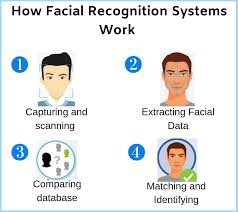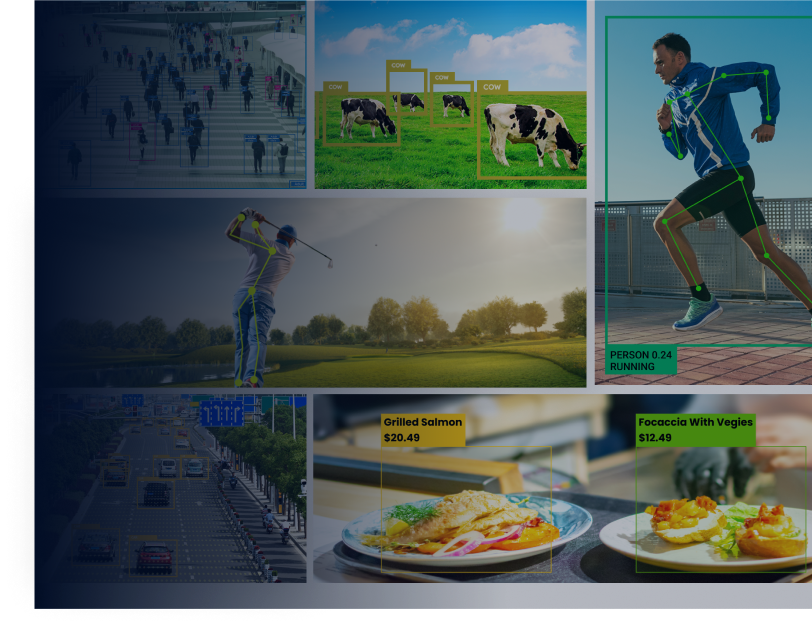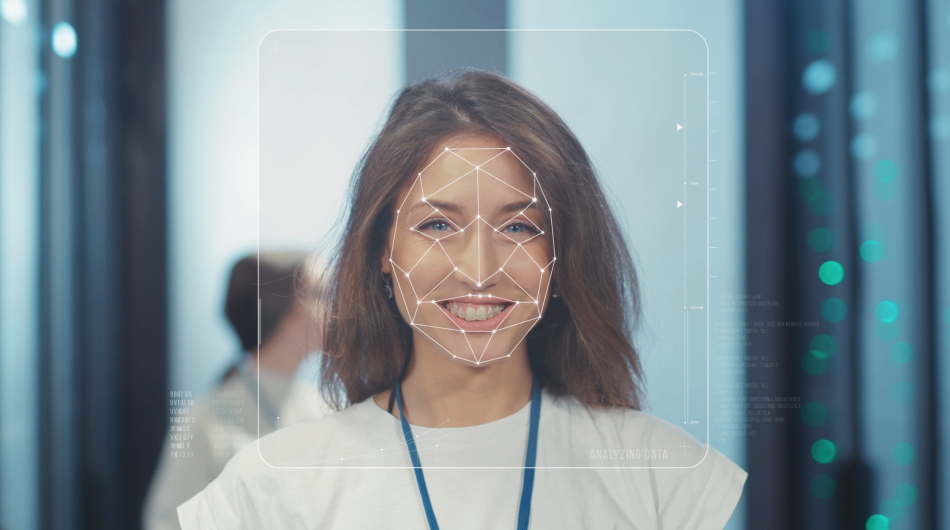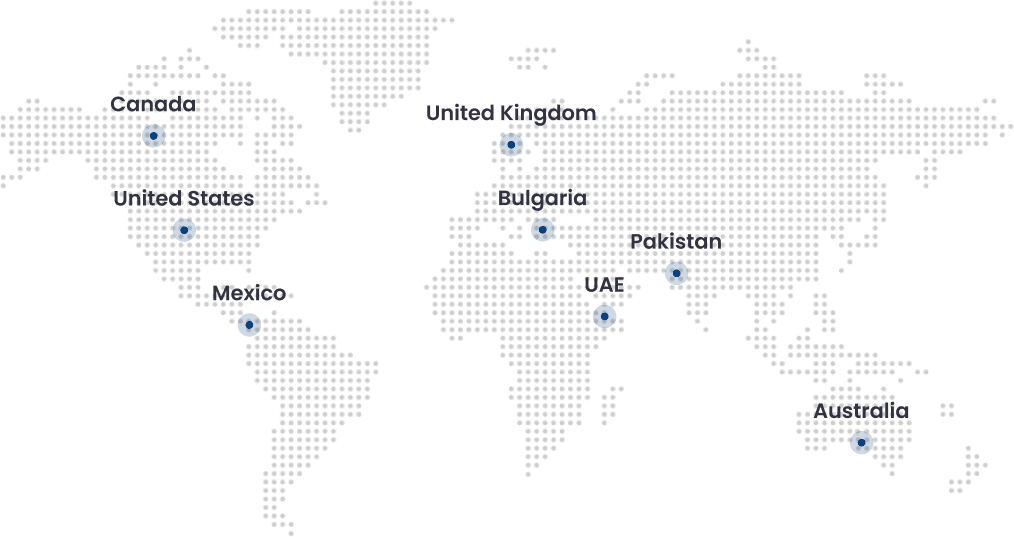In today’s digital world, keeping track of individuals is a complex task. However, facial recognition technology is making this task easier and changing businesses’ operations. It’s making everything more secure, efficient, and convenient. Some of the main benefits of facial recognition are better security, smoother operations, and improved user experiences. Not only this—the market for this tech is expected to jump $8.5 billion by 2025!
Big companies like Apple and Facebook are already using it to improve their systems and security. By integrating facial recognition, businesses may preserve their assets, boost employee efficiency, and enrich client experiences. The benefits of facial recognition are clear for any company looking to stay ahead. Want to learn more about how this technology can benefit your workplace? Keep reading this blog!
What Is Facial Recognition? How It Works

Facial recognition technology uses advanced algorithms to pick out and analyze facial features from a photo or video. This process begins with the detection of a face in an image or video. Once a face is detected, the system maps the unique geometry of the facial features such as the distance between the eyes, the shape of the nose, and the contours of the cheekbones. These measurements create a facial signature, which is essentially a mathematical representation of the face.
Steps in Facial Recognition
- Detection: The system first scans an image or video for faces using techniques like Haar cascades or deep learning methods.
- Alignment: The detected face is aligned to match a standard format, ensuring that the facial features are in the correct position for analysis.
- Feature Extraction: Key facial landmarks are identified, and their positions are measured. Commonly analyzed features include distances between eyes, nose width, and jawline shape.
- Normalization: The extracted features are then normalized to compensate for lighting, pose, and expression variations so that they can be more reliably compared.
- Matching: The facial signature is compared to a database of stored faces to find the closest match using various algorithms like eigenfaces, Fisherfaces, or more advanced deep learning techniques.
- Decision: Based on the comparison, the system decides whether there is a match and provides results typically in the form of an identification or a confidence score.
Benefits of Facial Recognition in the Workplace
Facial recognition technology can make the workplace better by boosting security, simplifying access, and improving timekeeping. It helps any organization become more efficient and safe. some of the benefits of facial recognition technology are below.
1. Enhanced Security
Facial recognition is best when it comes to strengthening security, as this technology alone takes the responsibility of letting only authorized people into restricted areas. It makes logging in easier and faster, and it also tracks employee attendance by automatically scanning and verifying each individual when they check in and out. Overall, it’s a useful technology to have around.
2. Improved Convenience and Efficiency
Facial recognition makes work easier. It often happens that many employees in a hurry forget their ID card but now no need to worry as you can walk into the office without needing your ID card—the system just recognizes you and lets you in. This saves time and cuts stress, especially on busy mornings. It automatically logs your attendance, so no more punching in and out. Plus, it secures computer access without needing to remember passwords. Overall, facial recognition makes the workplace smoother and more efficient.
3. Reduced Fraud
Businesses experience fraud nowadays but using facial recognition has cut down on fraud. It’s tough for people to fake someone else’s face because the system looks at unique features. This means fewer fake IDs or stolen passwords getting through. It also makes online transactions safer since your face is harder to copy than a password. By using this technology, businesses can trust that the person they’re dealing with is who they say they are. This keeps both the company and the customer safe from fraud.
4. Health and Safety Enhancements
This tech alone is making workplaces healthier and safer. Think about it: you can easily identify who’s in the building without any physical contact, which is super useful during health crises like pandemics. It also keeps track of who comes and goes, ensuring everyone is safe during emergencies. Plus, it can automatically check temperatures to spot anyone who might be sick before they interact with others. So, using facial recognition isn’t just about security and efficiency; it’s also about caring for everyone’s health and safety.
5. Operational Cost Reduction
Reducing operational costs with facial recognition is straightforward. It reduces the need for physical ID cards or staff to manage processes like verifying identities and logging attendance. The workflow has become more efficient and companies have been able to save time and money as a result.
Risks of Facial Recognition in the Workplace
Facial recognition technology has its benefits, but it also comes with certain risks. Some of these include:
1. Privacy Concerns
Using facial recognition at work might feel like a privacy invasion. It records and stores your face data, which makes some people uncomfortable. It’s like having your own personal information out there, and you might worry about who can access it. So, the company must be transparent about how they store, use, and protect this data to make everyone feel secure.
2. Inaccuracies and Bias
Facial recognition systems aren’t perfect. Sometimes, they get it wrong, especially with certain skin tones or facial features. This can lead to mistakes or unfair treatment. Companies need to recognize these issues and work on improving accuracy to ensure fair treatment for everyone.
3. Data Security Risks
The facial data collected needs to be protected because it can be tempting for hackers. If the system is not secure, there’s a risk of data breaches. That’s why companies need to have strong security measures in place, like encryption, to keep everyone’s data safe from cyber-attacks.
4. Employee Trust Issues
Trust takes a hit if employees feel like they’re constantly being watched. It might create a sense of discomfort and make people less happy at work. Open communication about how facial recognition is being used and why it’s necessary can help in building trust and making employees comfortable with the technology.
Types of Facial Recognition Technology
Before exploring the benefits, let’s first understand the various types of facial recognition technology.
1. 3D Facial Recognition
The technology facial recognition recognizes or verifies people by analyzing and comparing patterns in their facial features.
How It Works
- Capture: A photo or video of the person’s face is taken.
- Extraction: The system identifies unique markers on the face—like the distance between eyes or the shape of the jawline.
- Comparison: These markers are compared with a database of known faces.
- Match or No Match: The system determines if there’s a match, providing either identification or a denial.
Advantages
Facial recognition offers several clear advantages:
- Enhanced Security: It’s more robust than using passwords or keys, significantly reducing the risk of unauthorized access.
- Fast and Efficient: Quick identification makes processes like clocking in at work or passing through security checkpoints smoother.
- Non-Intrusive: A person doesn’t need to physically touch any object to verify himself, as facial recognition can be done remotely, unlike fingerprint or retina scans.
Use Cases
Facial recognition is already in use across many fields:
- Workplace: Streamlines employee check-ins and enhances office security.
- Retail: Personalises shopping experiences by identifying returning customers.
- Airports: Speeds up the boarding process and improves security checks.
- Law Enforcement: Helps in identifying suspects in real time.
2. Facial Analytics
Facial analytics is the use of facial recognition technology to collect data on a person’s age, gender, emotions, and other characteristics. Here’s a quick breakdown.
Bonus Read: Real-Time Age & Gender Detection using OpenCV
How It Works
- Capture: A photo or video of the individual’s face is taken.
- Analysis: The system examines facial features to extract relevant information.
- Interpretation: The data is interpreted to provide insights like mood, age range, or even customer engagement levels.
Advantages
Facial analytics offers several straightforward benefits:
- Customer Insights: Businesses can have a better grasp of their clients’ demographics and preferences.
- Enhanced User Experience: Creates experiences based on real-time emotional feedback.
- Operational Efficiency: Provides valuable data that can streamline operations and improve service delivery.
Use Cases
Facial analytics is helpful in various scenarios:
- Retail: Stores can understand shopper preferences and behavior, allowing for personalized promotions.
- Marketing: Helps in assessing audience reactions to campaigns or displays.
- Customer Service: Aids in evaluating staff performance and customer satisfaction.
- Event Management: Provides insights into attendance demographics and engagement that can possibly used to improve future events.
3. Skin Texture Analysis
Skin texture analysis adds another layer of detail to facial recognition technology by examining unique skin patterns on a person’s face.
How It Works
- Capture: A photo or video of the person’s face is taken, focusing on the skin texture.
- Analysis: The system zooms in on skin details like pores, wrinkles, and scars.
- Comparison: These skin patterns are compared to a database to identify a match or no match.
Advantages
- High Accuracy: Provides even more precise identification by using unique skin features.
- Enhanced Security: It makes it incredibly difficult for impostors to fake facial recognition systems.
- Reliable: Works well in various lighting conditions and angles.
Use Cases
- Banking: Adds an extra layer of security for transactions.
- Healthcare: Ensures patient identity before medical procedures.
- Access Control: Provides reliable identification for high-security areas.
4. Thermal Facial Recognition
Thermal facial recognition uses heat patterns emitted by the face to identify individuals.
How It Works
- Capture: A thermal camera captures the heat signature of a person’s face.
- Analysis: The system analyzes the unique thermal patterns and contours of the face.
- Comparison: These thermal images are compared to a database to find a match or no match.
Advantages
- Enhanced Accuracy: Works well even in low light or complete darkness.
- Temperature Insensitivity: Not affected by changes in ambient temperature.
- High Security: Difficult to spoof because of the unique heat signatures.
Use Cases
- Security: Effective for night-time surveillance and identifying individuals in low-light scenarios.
- Healthcare: Monitors patients’ facial temperatures for early signs of illness.
- Law Enforcement: Useful in identifying suspects during nighttime operations.
5. Multimodal Facial Recognition
Multimodal facial recognition combines multiple types of biometric data to improve accuracy and security.
How It Works
- Capture: Different data types like 3D facial geometry, skin texture, and thermal patterns are collected simultaneously.
- Fusion: The system integrates all the captured data to create a comprehensive profile.
- Comparison: This profile is then compared to a database to identify a match or no match.
Advantages
- High Precision: Combining different data types makes identification more accurate.
- Robust Security: It’s much harder for impostors to fool the system.
- Versatility: Works in various environmental conditions and scenarios.
Use Cases
- Airports: Enhances security checks by providing multi-layered identification.
- Financial Institutions: Adds extra security for transactions and account access.
- Healthcare: Ensures patient identification with high confidence levels.
Best Practices for Implementing Facial Recognition in the Workplace
1. Clear Communication and Transparency
- Inform Employees: Tell staff about the plan to use facial recognition. Explain how it works, what data will be collected, and its use. If it’s only for specific purposes, inform them. Tell them how you’ll protect their data.
- Make Policies Explicit: Have a clear policy about the collection, storage, and usage of facial data. Communicate this to employees to make sure everyone is aware of what’s expected.
2. Establish Clear Objectives
- Define Goals: Decide what you want to achieve with facial recognition, like improving security or monitoring attendance. This will help you choose the right technology and set up systems accordingly.
- Set Boundaries: Identify areas where facial recognition will be used, like entry points or certain rooms. Mark these zones to inform employees about where they will be tracked. This allows for transparency and helps employees feel more comfortable.
3. Regular Training and Testing
- Train Staff: Make sure all employees are trained on the technology, including how it works, its limitations, and best practices for using it. This will help avoid any misunderstandings or mistakes.
- Test Accuracy: Regularly test the accuracy of your facial recognition system to identify any biases or inaccuracies. If found, work on improving them to ensure fair treatment for everyone.
4. Secure Data Management
- Follow Data Privacy Regulations: Make sure you comply with all data privacy regulations in your region when collecting and storing facial data.
- Encrypt Facial Data: Use strong encryption methods to safeguard data from cyber threats.
5. Constant Evaluation and Improvement
- Review Policies: Regularly review your policies to make sure they align with the current legal requirements and best practices.
- Implement Feedback: Encourage employees to provide feedback on their experience with facial recognition. Use this feedback to improve systems and address any issues or concerns raised by employees.
How Can Folio3 AI Help?
At Folio3 AI, we understand the importance of implementing facial recognition technology responsibly and ethically. Our team of experts has extensive experience in developing secure and accurate facial recognition solutions for businesses across various industries. We can assist companies in implementing best practices and complying with regulations to ensure the successful deployment and management of facial recognition technology in the workplace.
Our services include:
- Designing custom facial recognition systems tailored to your specific business needs.
- Ensuring compliance with relevant privacy laws and regulations.
- Conducting regular audits and impact assessments to evaluate system accuracy, fairness, and security.
- Providing training programs for employees on how to use the technology correctly.
- Ongoing support and maintenance to keep your facial recognition system up-to-date.
learn more about how we can help your company employ facial recognition technology responsibly and ethically. Together, we can make your workplace safer, more efficient, and more secure for everyone.
So why wait? Contact Folio3 AI now and take the first step towards a better future with facial recognition technology!

Dawood is a digital marketing pro and AI/ML enthusiast. His blogs on Folio3 AI are a blend of marketing and tech brilliance. Dawood’s knack for making AI engaging for users sets his content apart, offering a unique and insightful take on the dynamic intersection of marketing and cutting-edge technology.










